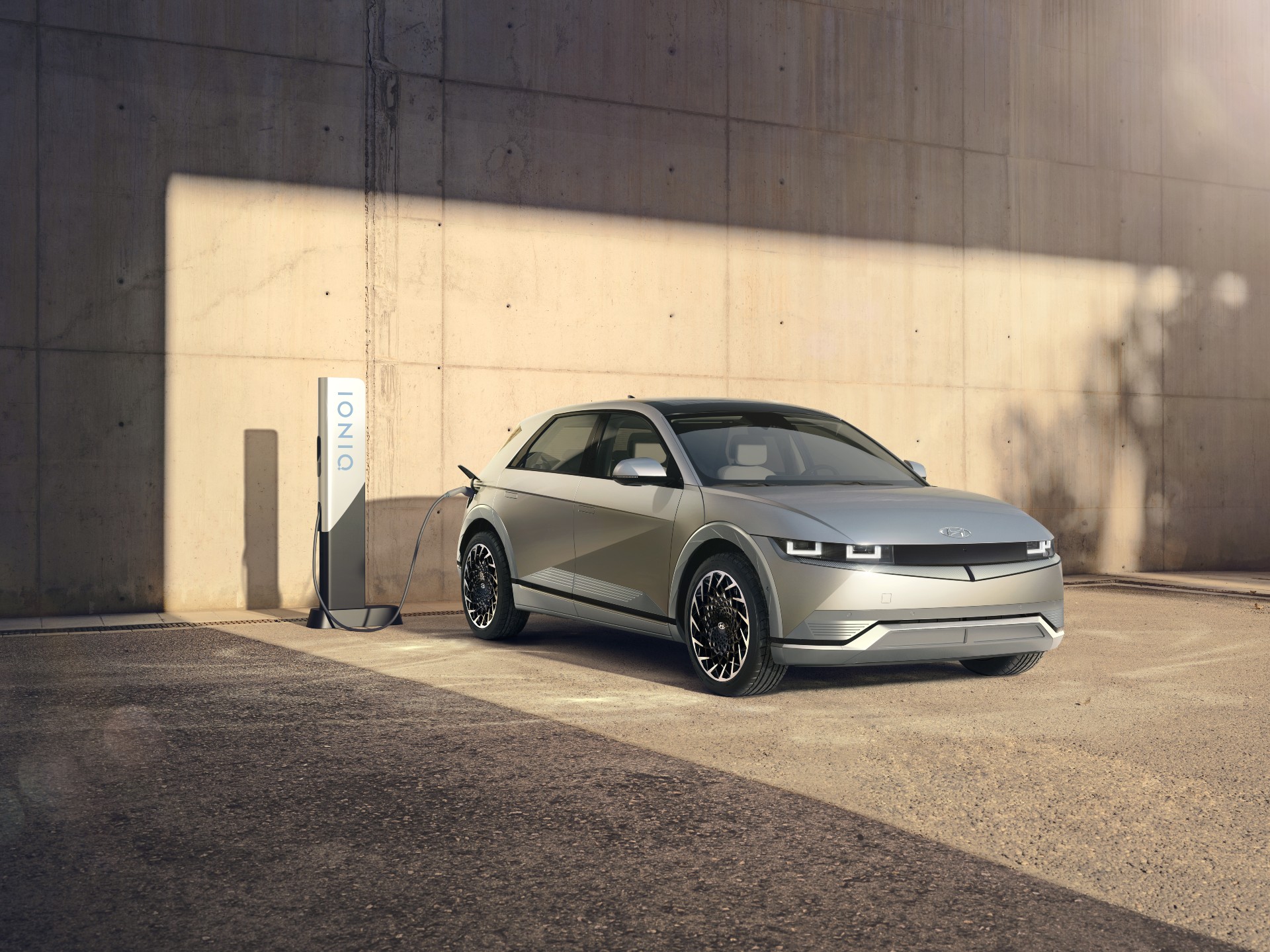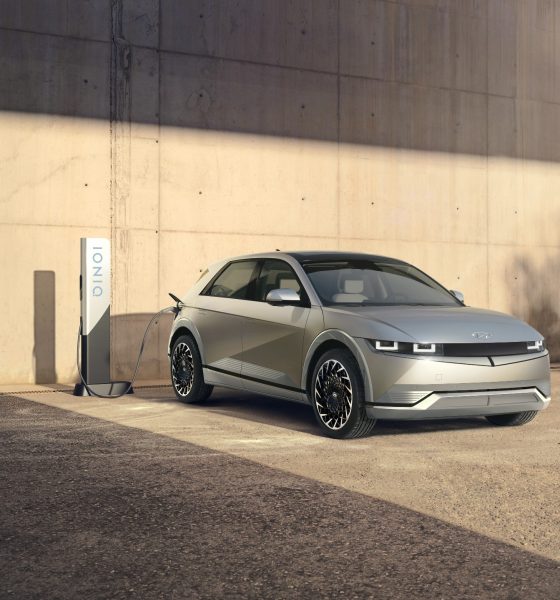

News
Hyundai throws the gauntlet against Tesla and Ford, declares itself as EV charging leader
Hyundai is determined to be recognized as a legitimate and formidable competitor in the electric vehicle sector. And based on the South Korean automaker’s recent statements, it appears that Hyundai is setting its sights on some of the market’s most prominent players, including Tesla and Ford, both of whom have delivered and unveiled vehicles that are well-reviewed and loved by their owners, both present and future.
So confident is Hyundai with its lineup of Ioniq vehicles that it plans to offer shoppers a few months behind the wheel before making a final decision. This try-and-buy program is a notable show of confidence, and one which Olabisi Boyle, vice president of product planning and mobility strategy at Hyundai Motor North America, believes would bring loyal customers to Hyundai’s electric vehicle lineup.

“When you try before you buy and you find it can work for you in your everyday life, you tend to now want to move toward potentially owning. We do expect that they’ll transition from try to buy,” he said.
Hyundai is launching its Ioniq subbrand with three vehicles: the Ioniq 5, Ioniq 6, and the Ioniq 7. The 5 is comparable to Hyundai’s Tuscon compact crossover, the 6 is comparable to the Sonata midsize sedan, and the 7 is comparable to the Palisade midsize crossover. This is but the first phase of its full-court EV press, too, as more electric cars are on the way. More importantly, the South Korean automaker is promising a number of impressive attributes for its Ioniq lineup, such as 300 miles of range for its base model, and in the case of the Ioniq 5, an 800-volt architecture.
This should give the Ioniq 5 an edge against its rivals such as the Ford Mustang Mach-E, Volkswagen ID.4, both of which are built with 400-volt systems. Hyundai estimates that with its 800-volt system, a five-minute charge at the fastest public chargers could provide 68 miles of range. An 18-minute charge could also fill the Ioniq 5’s battery from 10 to 80%, provided that ideal conditions are met.

Ryan Miller, manager of electrified powertrain development at the Hyundai Kia America Technical Center, believes that this establishes the South Korean automaker as the leader in charging speed. Miller noted that rivals such as the Mach-E and the Model Y are nowhere close to the Ioniq 5’s charging speed, and that Hyundai will be the leader for some time. “If you look at the Mach-E or the Model Y, they’re not even close to our capability. We really will be the leader in the market for charging time,” he said.
Unfortunately for Miller, Tesla’s Supercharger V3 stations are already faster than Hyundai’s announced peak charging speed for the Ioniq 5. Under ideal conditions, V3 Superchargers could recover up to 75 miles of range in five minutes at charge rates of up to 1,000 miles per hour. Tesla was able to do this with a 400-volt architecture. With this in mind, one can only imagine what an 800-volt Tesla could do.
Don’t hesitate to contact us for news tips. Just send a message to tips@teslarati.com to give us a heads up.

News
Tesla FSD fleet is nearing 7 billion total miles, including 2.5 billion city miles
As can be seen on Tesla’s official FSD webpage, vehicles equipped with the system have now navigated over 6.99 billion miles.

Tesla’s Full Self-Driving (Supervised) fleet is closing in on almost 7 billion total miles driven, as per data posted by the company on its official FSD webpage.
These figures hint at the massive scale of data fueling Tesla’s rapid FSD improvements, which have been quite notable as of late.
FSD mileage milestones
As can be seen on Tesla’s official FSD webpage, vehicles equipped with the system have now navigated over 6.99 billion miles. Tesla owner and avid FSD tester Whole Mars Catalog also shared a screenshot indicating that from the nearly 7 billion miles traveled by the FSD fleet, more than 2.5 billion miles were driven inside cities.
City miles are particularly valuable for complex urban scenarios like unprotected turns, pedestrian interactions, and traffic lights. This is also the difference-maker for FSD, as only complex solutions, such as Waymo’s self-driving taxis, operate similarly on inner-city streets. And even then, incidents such as the San Francisco blackouts have proven challenging for sensor-rich vehicles like Waymos.
Tesla’s data edge
Tesla has a number of advantages in the autonomous vehicle sector, one of which is the size of its fleet and the number of vehicles training FSD on real-world roads. Tesla’s nearly 7 billion FSD miles then allow the company to roll out updates that make its vehicles behave like they are being driven by experienced drivers, even if they are operating on their own.
So notable are Tesla’s improvements to FSD that NVIDIA Director of Robotics Jim Fan, after experiencing FSD v14, noted that the system is the first AI that passes what he described as a “Physical Turing Test.”
“Despite knowing exactly how robot learning works, I still find it magical watching the steering wheel turn by itself. First it feels surreal, next it becomes routine. Then, like the smartphone, taking it away actively hurts. This is how humanity gets rewired and glued to god-like technologies,” Fan wrote in a post on X.
News
Tesla starts showing how FSD will change lives in Europe
Local officials tested the system on narrow country roads and were impressed by FSD’s smooth, human-like driving, with some calling the service a game-changer for everyday life in areas that are far from urban centers.

Tesla has launched Europe’s first public shuttle service using Full Self-Driving (Supervised) in the rural Eifelkreis Bitburg-Prüm region of Germany, demonstrating how the technology can restore independence and mobility for people who struggle with limited transport options.
Local officials tested the system on narrow country roads and were impressed by FSD’s smooth, human-like driving, with some calling the service a game-changer for everyday life in areas that are far from urban centers.
Officials see real impact on rural residents
Arzfeld Mayor Johannes Kuhl and District Administrator Andreas Kruppert personally tested the Tesla shuttle service. This allowed them to see just how well FSD navigated winding lanes and rural roads confidently. Kruppert said, “Autonomous driving sounds like science fiction to many, but we simply see here that it works totally well in rural regions too.” Kuhl, for his part, also noted that FSD “feels like a very experienced driver.”
The pilot complements the area’s “Citizen Bus” program, which provides on-demand rides for elderly residents who can no longer drive themselves. Tesla Europe shared a video of a demonstration of the service, highlighting how FSD gives people their freedom back, even in places where public transport is not as prevalent.
What the Ministry for Economic Affairs and Transport says
Rhineland-Palatinate’s Minister Daniela Schmitt supported the project, praising the collaboration that made this “first of its kind in Europe” possible. As per the ministry, the rural rollout for the service shows FSD’s potential beyond major cities, and it delivers tangible benefits like grocery runs, doctor visits, and social connections for isolated residents.
“Reliable and flexible mobility is especially vital in rural areas. With the launch of a shuttle service using self-driving vehicles (FSD supervised) by Tesla in the Eifelkreis Bitburg-Prüm, an innovative pilot project is now getting underway that complements local community bus services. It is the first project of its kind in Europe.
“The result is a real gain for rural mobility: greater accessibility, more flexibility and tangible benefits for everyday life. A strong signal for innovation, cooperation and future-oriented mobility beyond urban centers,” the ministry wrote in a LinkedIn post.
News
Tesla China quietly posts Robotaxi-related job listing
Tesla China is currently seeking a Low Voltage Electrical Engineer to work on circuit board design for the company’s autonomous vehicles.

Tesla has posted a new job listing in Shanghai explicitly tied to its Robotaxi program, fueling speculation that the company is preparing to launch its dedicated autonomous ride-hailing service in China.
As noted in the listing, Tesla China is currently seeking a Low Voltage Electrical Engineer to work on circuit board design for the company’s autonomous vehicles.
Robotaxi-specific role
The listing, which was shared on social media platform X by industry watcher @tslaming, suggested that Tesla China is looking to fill the role urgently. The job listing itself specifically mentions that the person hired for the role will be working on the Low Voltage Hardware team, which would design the circuit boards that would serve as the nervous system of the Robotaxi.
Key tasks for the role, as indicated in the job listing, include collaboration with PCB layout, firmware, mechanical, program management, and validation teams, among other responsibilities. The role is based in Shanghai.
China Robotaxi launch
China represents a massive potential market for robotaxis, with its dense urban centers and supportive policies in select cities. Tesla has limited permission to roll out FSD in the country, though despite this, its vehicles have been hailed as among the best in the market when it comes to autonomous features. So far, at least, it appears that China supports Tesla’s FSD and Robotaxi rollout.
This was hinted at in November, when Tesla brought the Cybercab to the 8th China International Import Expo (CIIE) in Shanghai, marking the first time that the autonomous two-seater was brought to the Asia-Pacific region. The vehicle, despite not having a release date in China, received a significant amount of interest among the event’s attendees.








